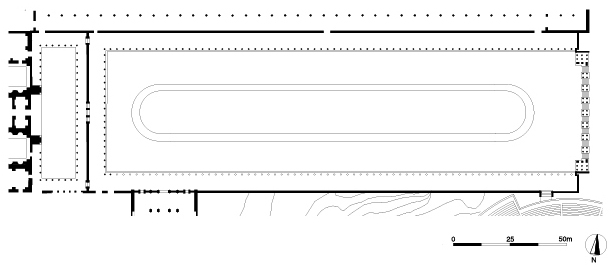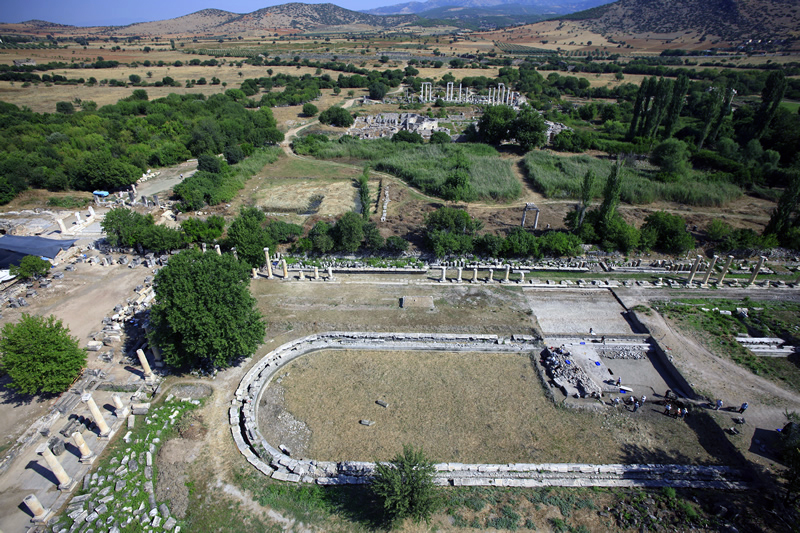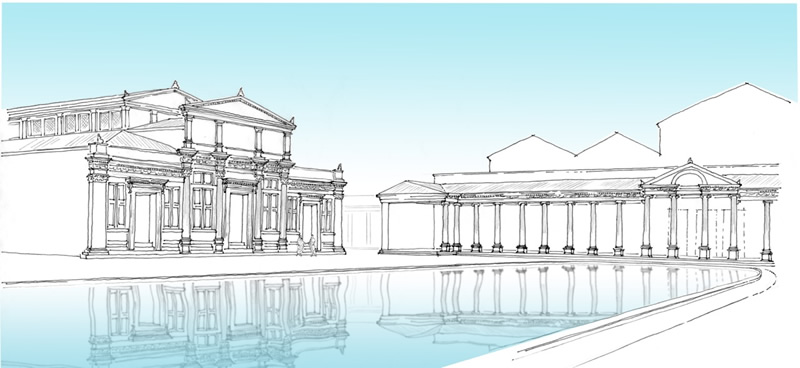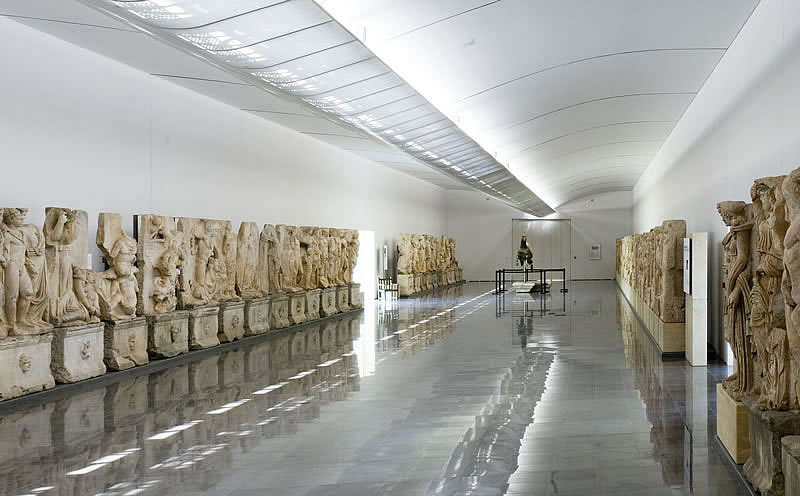The Urban Park was the city’s second public square and lies back to back with the Agora. It is a long colonnaded piazza (215 X 70 m), whose earliest part, the north stoa, was dedicated by a local aristocrat Diogenes to the emperor Tiberius (AD 14-37). The frieze of this colonnade was carved with a repeated motif of fruit garlands draped over a huge variety of masks.
The south side was defined at its east end by the great masonry retaining wall of the Theatre, some 20m high. Originally, the Theatre hill probably spread up to half way across the planned space and had to be cut back in a major feat of labour and engineering. This was a coordinated scheme, required both for the planned Theatre auditorium and for the Urban Park piazza. The south side of the square at its west end was closed by the facade of the Civil Basilica (and much later by a portico in front of it). The short, west end of the square was defined by a new colonnade built in the early second century to make the transition to the Hadrianic Baths. Finally, the east end was closed near the end of first century by the colossal columnar facade known as the Propylon of Diogenes. Tunnels under the flanking towers of this Propylon gave access to and from the Tetrapylon Street behind. The surviving Ionic stoa on the south side was added in a major renovation of the whole complex in the sixth century AD.
Excavations in the 1980s revealed an extraordinary monumental water-basin (170 X 30m) in the centre of the square with a sophisticated system of water circulation within its double wall-casing. A hypothesis that the complex was not an agora at all but ‘the place of palms’ mentioned by a sixth-century benefactor in an inscription on the Propylon of Diogenes was tested by excavation with a generous grant by Mica Ertegün in 2012.
This led to a major five-year fieldwork project, The Mica and Ahmet Ertegün South Agora Pool Project, funded by Mrs Ertegun. The pool was flanked by palm trees whose planting trenches were found in excavation. A late antique poem inscribed on the Propylon of Diogenes calls the whole complex ‘the Place of Palms’. It was the kind of urban park familiar from similar complexes or porticus in early imperial Rome.
See also: The Mica and Ahmet Ertegün South Agora Pool Project








